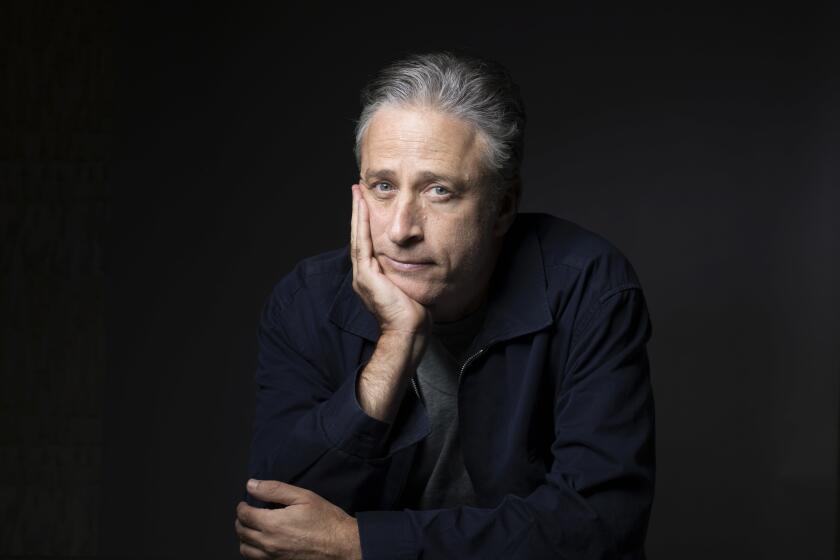Ravi Shankar: An Appreciation
- Share via
When inspired — which, when he began to play a raga, was often — Ravi Shankar could make you think he had mastered the secret of creation. The famed Indian musician, who died Tuesday at age 92, was not a doer but a maker.
His sitar seemed no ordinary musical instrument causing the air to vibrate but a musical 3-D printer producing notes that were more like elementary particles, with mass and electric charge and all those funny properties physicists call up, down, strange, charm, bottom and top. But Shankar’s particles also had the one scientists don’t talk about: soul.
In classical Indian music, a raga begins with the choice of a scale. The musicians toss out the notes in the air, letting them float around for a while to produce an atmosphere. This becomes the acoustical oxygen that the listener breathes.
PHOTOS: Ravi Shankar | 1920 - 2010
The player then emphasizes certain pitches. An order starts to be suggested. Notes gradually take on personalities and group into melodies. A rhythmic cycle gears up, becoming the motor of creation, the life force. These note/particles eventually burst into a flurry of cosmic dancing. Wild oats are sown, and by the end all hell breaks ecstatically loose, as if life itself has emerged.
Truly understanding Shankar’s incredible mastery of this very complex art form can be as intimidating as rocket science. Rhythmic cycles have as many as 108 beats and may be subdivided into fractions. The pitch structure is so exceptionally nuanced that only a highly trained ear can apprehend it. A knowledge of the many traditional ragas is required to grasp how Shankar’s improvisatory art made the ageless new and the new ageless. This became one hint about the essence of existence.
Shankar was, thus, a musician to be approached in a state of reverence and awe. Unless, that is, you happened to be in the audience of, say, the Monterey International Pop Festival in 1967 already lighting up your third joint.
PHOTOS: Notable deaths of 2012
On Tuesday night, on hearing word of Shankar’s death, I thumbed through the master’s autobiography, “Raga Mala,” which was released in 1999, edited and introduced by George Harrison.
There was a full-page photo of Gene Kelly with his arm around the great sitarist at a Hollywood studio in 1957. There were Shankar’s recollections of jazz saxophonist John Coltrane, who didn’t live long enough to take up his planned studies with Shankar.
Philip Glass makes an inevitable appearance. While a student in Paris, Glass was Shankar’s assistant for the score of a film by the hipster cult filmmaker Conrad Rooks. In short order you come across Yehudi Menuhin, Marlon Brando, Dizzy Gillespie, Richard Burton, Zubin Mehta, Edward Kennedy, Jimi Hendrix and Art Garfunkel (whose voice Shankar found angelic).
The sitarist’s life was long, and he clearly got around. He began as a boy dancer who turned heads in Paris. But he returned to India as a chastened teenager ready to devote himself to the hard study of the sitar with a guru. He emerged then a new star at age 19 and began, in the early ‘50s, conquering the West anew and for good.
He was one of music’s great virtuosos, possibly in a class with Paganini, Liszt, Horowitz and Heifetz. And, certainly in his heyday of the ‘50s and ‘60s, his virtuosity combined with the new exoticism of Indian music catapulted Shankar to stardom. The Beatles and the psychedelic culture finished the job.
He also became the object of suspicion, as is often the curse of virtuosity. Paganini was believed to have signed a pact with the devil. Shankar was similarly demonized for his popularizing streak, which at times appeared opportunistic and probably, to some extent, was.
But Shankar aged exceptionally well. In the end, his inherent showmanship showed him proper balance between the value of and danger inherent in public life. He grew in scope as an artist and musical thinker. He knew exactly what sowing wild oats was for in his own life and in the life of the raga. He found the next step could be a kind of enlightenment.
It is fun to go back and listen to Shankar’s dazzling early recordings; they are joy rides commanding the power to brighten dark moods. And there is an impishness that Shankar never lost. I’ll never forget the smile on his face, a smile that could light a sky, at one of his last concerts — a recital at Walt Disney Concert Hall last year — when his little dog Suki ran onstage at the end.
During his celebrity years, Shankar single-handedly won over European royalty, Hollywood, pop stars and some of the most elevated classical musicians of the age to an Indian music they could barely fathom. His international fan base grew to the many millions. He became all but royalty in India. But I think only now we are ready to understand that his ultimate greatness was in the way he grew and evolved, how he put his vast experience to use to create a sense of heightened awareness in music.
That Disney Hall concert (and one recorded live in Escondido around the same time and released on DVD) was an occasion when trails of notes no longer flew by at impossible velocities but, rather, one when Shankar took the time to release their souls. He mastered not only creation but the whole of life’s cycle.
MORE
INTERACTIVE: Christopher Hawthorne’s On the Boulevards
TIMELINE: John Cage’s Los Angeles
PHOTOS: Arts and culture in pictures
More to Read
The biggest entertainment stories
Get our big stories about Hollywood, film, television, music, arts, culture and more right in your inbox as soon as they publish.
You may occasionally receive promotional content from the Los Angeles Times.











